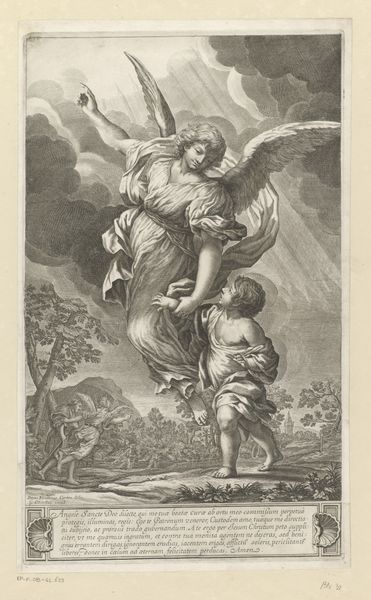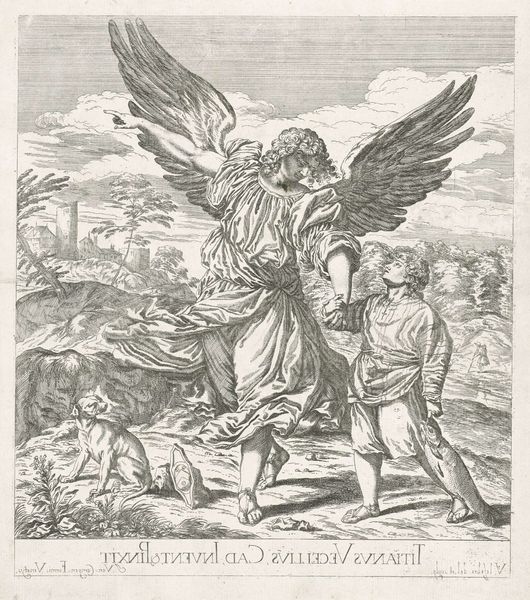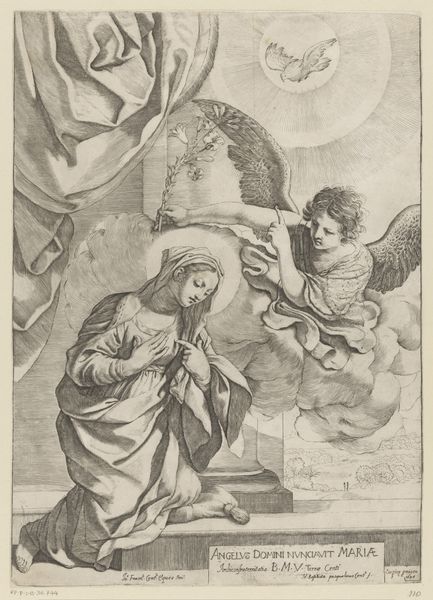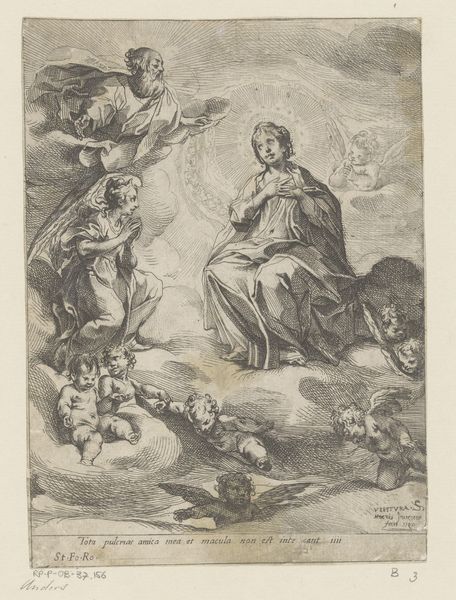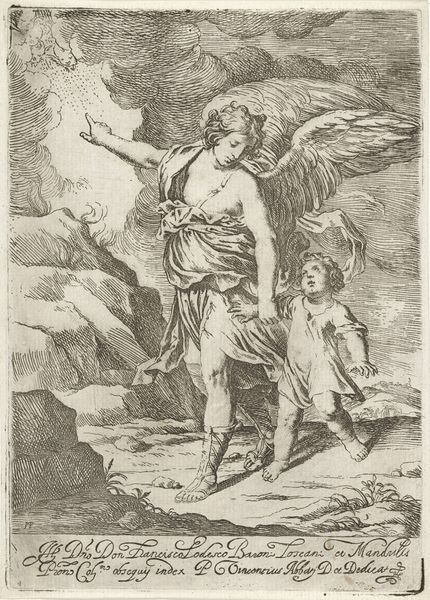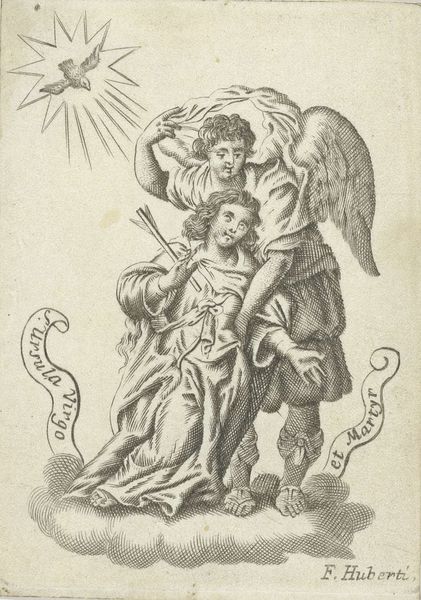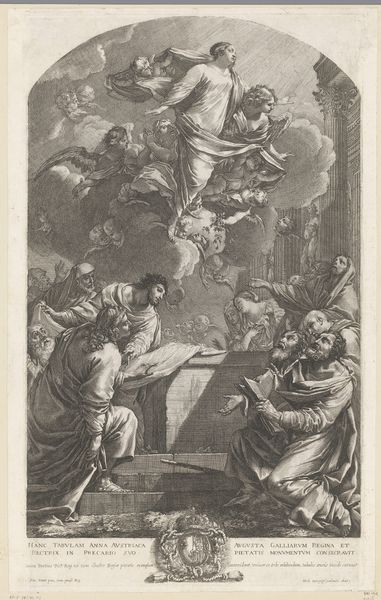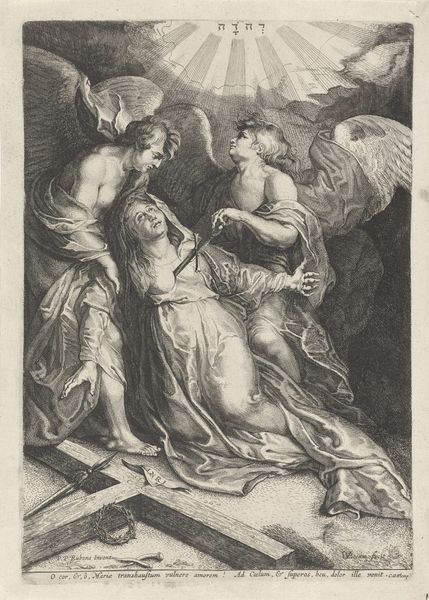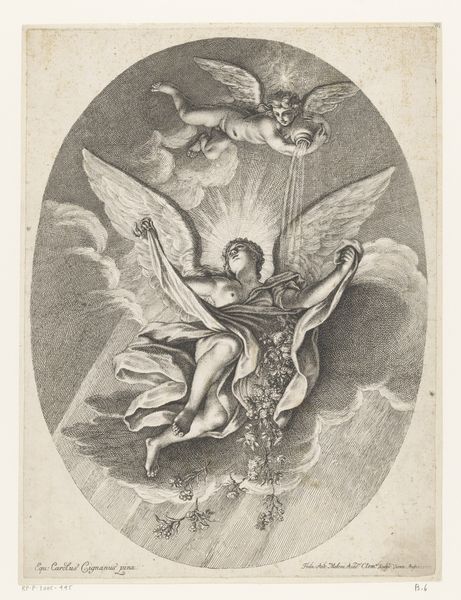
print, engraving
#
allegory
#
baroque
# print
#
old engraving style
#
traditional media
#
figuration
#
line
#
engraving
Dimensions: height 121 mm, width 80 mm
Copyright: Rijks Museum: Open Domain
Curator: Here we have an engraving from 1697, titled "Gelukkig de treurenden, want zij zullen getroost worden," which translates to "Blessed are those who mourn, for they shall be comforted." It's currently held at the Rijksmuseum. Editor: The first thing that strikes me is the starkness, almost an austere quality, created by the thin lines and the contrasting use of light and shadow. Curator: Precisely. Engraving is an intaglio process; the image is incised into a metal plate. This allows for very fine detail but also requires tremendous labor and skill, a carefully choreographed dance of tool and metal. The resulting prints, such as this one, would have circulated widely. Editor: Let's focus on the imagery. We see a weeping figure clinging to a cross, and above, an angel descends on a cloud. This juxtaposition creates a powerful visual representation of sorrow and solace. Notice how the lines accentuate the figure’s grief, the deep shadows in the folds of the drapery. Curator: Absolutely. The angel serves as a powerful symbol of divine intervention. The whole image speaks to Christian notions of grief, redemption and ultimately divine reward, a core element in the Baroque’s use of emotive symbolism to impart biblical lessons. It served to bring a sense of spiritual fulfillment to the process of earthly suffering. Editor: You're right, there's that sense of controlled emotion so prevalent during that period. Even in sorrow, there's a sense of theatricality. And while the angel is meant to be comforting, there is an almost operatic element to the composition as a whole, from the heavy shading to the almost artificial-looking clouds, typical of the period. It reminds one how performance played such a large role at that time, reflected even in these printed devotional images. Curator: It’s fascinating how the print medium itself adds layers of meaning. These weren't mass-produced as we think of things today. Each impression would have required skill and effort. Considering the likely religious and didactic intention of the work and the materials with which it was produced, one gains a further layer of insight, I believe. Editor: I agree. Examining those elements has only enhanced my appreciation for how image, symbolism, and social role coalesce here. Curator: Yes, by focusing on the cultural and symbolic dimensions, we illuminate how grief finds form and expression.
Comments
No comments
Be the first to comment and join the conversation on the ultimate creative platform.
